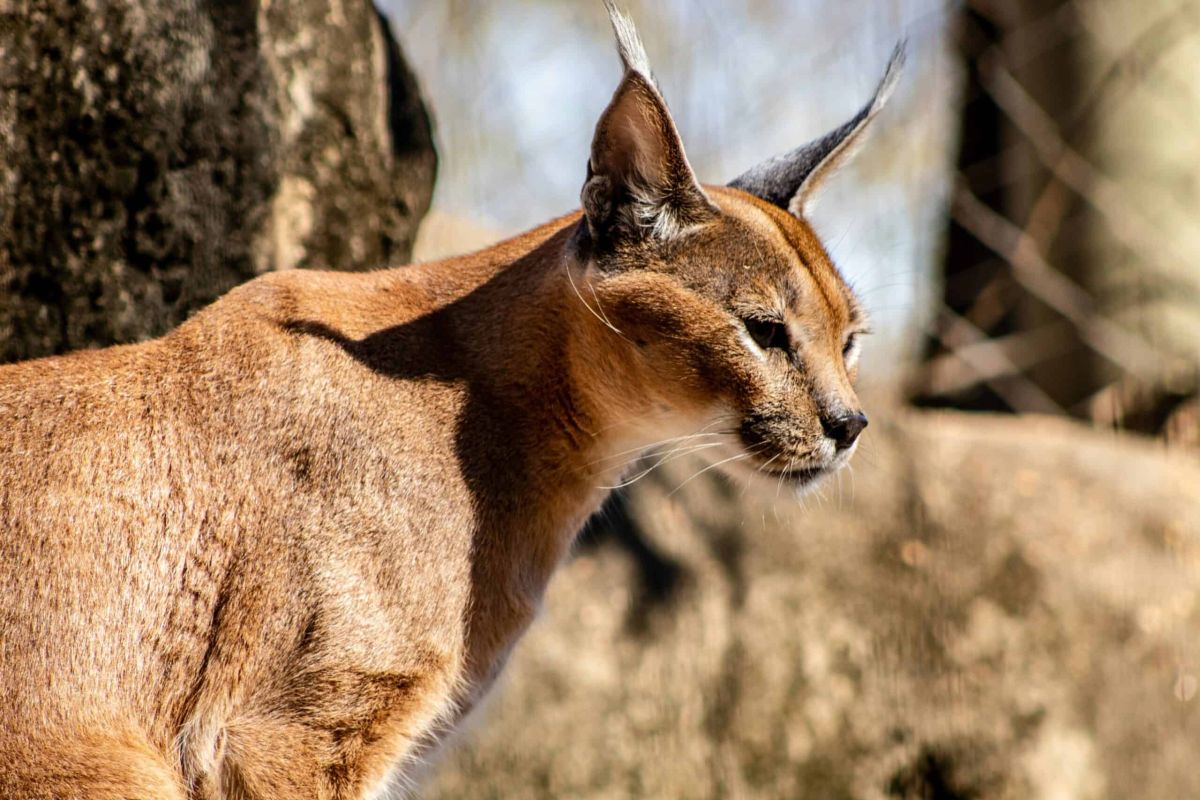Discovering Caracals: The Fascinating Felids of the African Savanna

The caracal (Caracal caracal) is a medium-sized wild cat that has captivated wildlife enthusiasts and researchers alike due to its striking appearance, unique adaptations, and elusive behavior. Native to Africa, the Middle East, and parts of Central Asia, these remarkable felids exhibit an intriguing blend of elegance and agility, making them one of the most captivating species in the animal kingdom.
Physical Characteristics
Caracals are known for their distinctive features, including their tufted ears, robust build, and striking reddish-brown coat. Adult caracals typically weigh between 30 to 40 pounds (13 to 18 kg) and stand about 18 to 24 inches (46 to 62 cm) tall at the shoulder. Their long legs and powerful hindquarters lend themselves to impressive agility, enabling them to leap up to 10 feet (3 meters) in the air to catch birds in flight.
One of the most endearing characteristics of the caracal is its large, tufted ears, which can reach up to 4 inches (10 cm) in length. These ear tufts are not merely for show; they play a crucial role in communication and spatial awareness, helping the caracal detect prey and navigate through its environment.
Habitat and Range
Caracals thrive primarily in dry savannas, semi-arid regions, and mountainous areas, where they can find ample cover and hunting opportunities. Their habitat ranges from the open grasslands of Africa to the rocky hillsides of the Middle East and Central Asia. Although often seen alone, these solitary creatures establish territories, which they mark with scent to communicate with other caracals in the area.
Diet and Hunting Behavior
As opportunistic carnivores, caracals have a diverse diet that includes small to medium-sized mammals, birds, and even reptiles. They are skilled hunters, employing a diversified hunting strategy that allows them to adapt to varying prey availability. Caracals are known for their impressive hunting techniques, often using stealth and resilience to pounce on unsuspecting prey. Their excellent vision and acute hearing assist them in spotting and tracking down their quarry.
In particular, the caracal’s ability to leap high and catch birds mid-flight sets it apart from many other felids. This skill exemplifies the caracal’s evolution as a predator in its environment. Notably, they have been observed taking down animals much larger than themselves, a testament to their strength and agility.
Behavior and Social Structure
Caracals are primarily crepuscular, meaning they are most active during dawn and dusk. These nocturnal habits help them avoid heat and competition while hunting. They are largely solitary animals, with males and females coming together only during mating season.
Mother caracals are attentive, giving birth to litters of one to five kittens. The kittens remain dependent on their mother for several months, learning essential hunting skills and territory navigation. Interestingly, caracal kittens bear a striking resemblance to their larger relatives, the lynx, before they mature into their distinct form.
Conservation Status
As of now, caracals are classified as Least Concern by the International Union for Conservation of Nature (IUCN). However, they face threats from habitat loss, human-wildlife conflict, and hunting. As agricultural expansion continues encroach on their natural habitats, maintaining viable populations of these beautiful creatures is becoming increasingly challenging.
Conservation efforts focused on habitat preservation, legal protections against hunting, and fostering coexistence practices between local communities and caracals are essential for ensuring these remarkable felids continue to thrive.
Conclusion
Caracals are truly remarkable animals that embody the spirit of the wild. Their unique adaptations and hunting skills make them fascinating subjects for study and admiration. Understanding and protecting these enigmatic cats is crucial for the balance of ecosystems in which they reside. As we continue to learn more about caracals, we are reminded of the fragile beauty of our planet and the importance of preserving the diverse wildlife that inhabits it.



